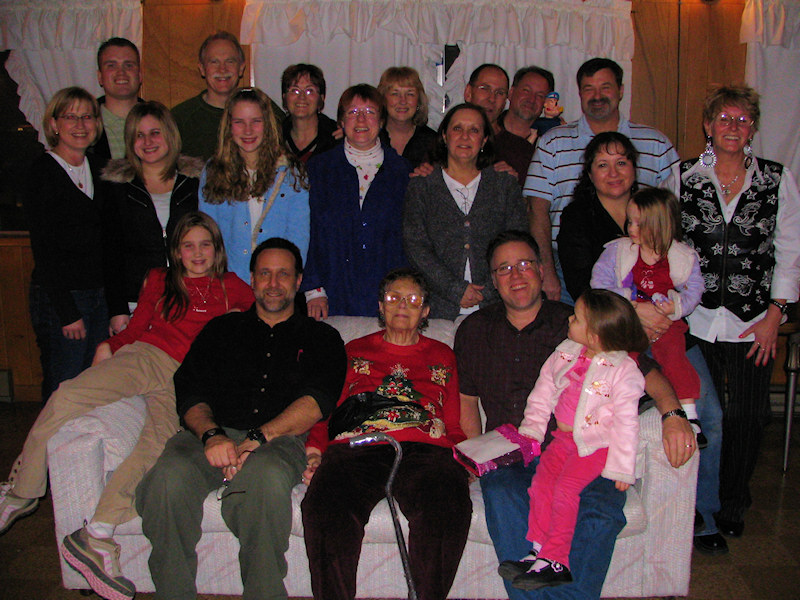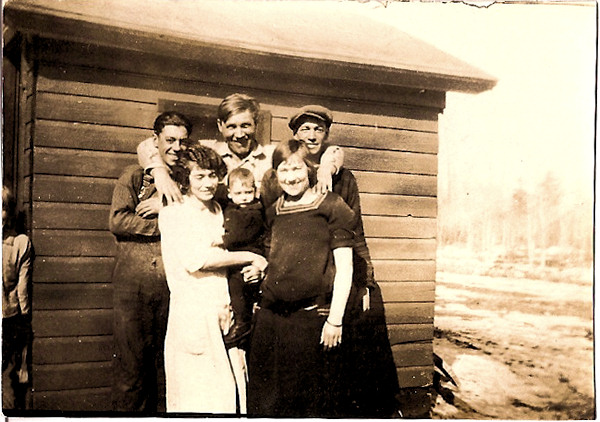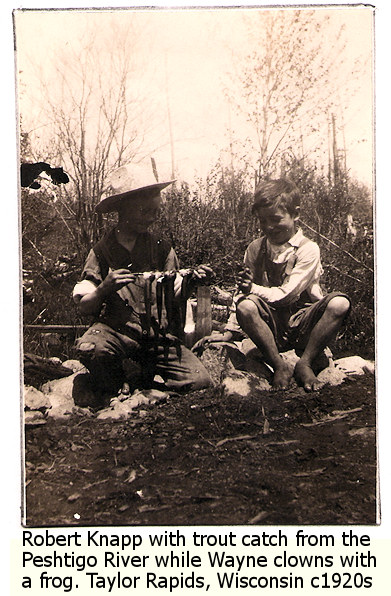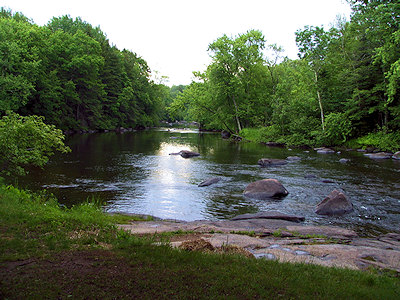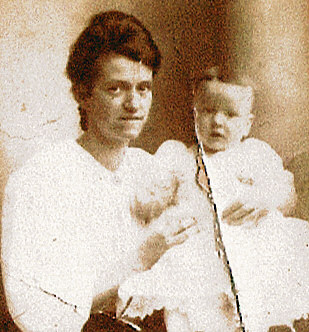The New York Times is launching a new project, “The Lives They Lived: Share Your Photos,” asking the public to contribute a photograph representing the life of a family member or close friend who died this past year.
For our upcoming The Lives They Lived issue, we invite you to contribute a photograph that illustrates a story from the life of someone close to you who passed away this year. It could be a wedding snapshot, a travel brochure, a book cover, a blueprint of a dream house: any image that you think captures one moment from the life of the person you’re remembering.
The deadline is now as the issue comes out December 25, 2011. They are requesting high-resolution scanned originals or digital images representing the life of that person, along with a 200 word explanation and permission to publish.
Can you pick a single picture that represents an entire life? As I think back over the past of the family members we’ve lost, is there a single image that represents their life in total? That’s a tough question.
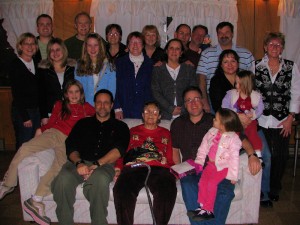 For my Aunt June DesRochers, the last picture of the whole DesRocher clan around her taken just before she died a few years ago represents her life to me. She had six kids and managed to raise them by herself after her husband died when the youngest was in diapers. It wasn’t easy, and maybe she didn’t do a perfect job, but the six kids turned out great and they all have children and grandchildren, an amazing family, one that June was actually pretty proud of even though she might not have said much about it.
For my Aunt June DesRochers, the last picture of the whole DesRocher clan around her taken just before she died a few years ago represents her life to me. She had six kids and managed to raise them by herself after her husband died when the youngest was in diapers. It wasn’t easy, and maybe she didn’t do a perfect job, but the six kids turned out great and they all have children and grandchildren, an amazing family, one that June was actually pretty proud of even though she might not have said much about it.
I’m trying to find it, but the only image I have that comes immediately to mind of my grandmother, Nora Knapp Anderson, is one of her reading to me in bed. I think of it every time I think of her. I don’t remember her physically, so this single photograph represents my visual memory. I was only two or three years old and it was months before she died. As I look through all of the family history photographs I have of the Knapp family, Nora, the only girl among eight boys, is often seen with a brother hanging off of her, helping them read or reading to them, laughing, playing, or just hugging together. Images of the close knit family they were. According to family members, me, her first grandchild, brought back those happy and joyous family feelings and she dreaded missing a moment with me. To me, that photograph represents the sense of togetherness, family, and sharing that made up most of her childhood.
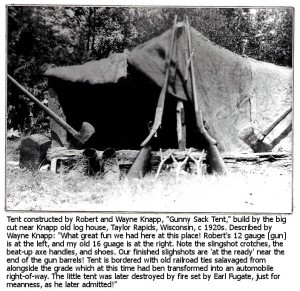
Tent built by Robert and Wayne Knapp circa 1924 along Peshtigo River, Taylor Rapids, Wisconsin. Burnt down by Earl Fugate in bully prank.
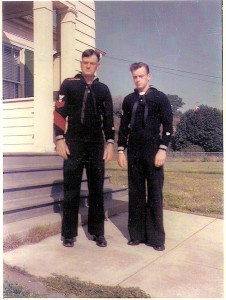 For my father, I wonder if I even have a photograph in my collection that would sum up his life. I have pictures that represent moments in his life when he played various roles, and the picture I used on the cover of his funeral card taken in the last few months of his life looking happier and healthier than anyone had seen him in 30 or 40 years, but does that truly represent his life or a moment in time?
For my father, I wonder if I even have a photograph in my collection that would sum up his life. I have pictures that represent moments in his life when he played various roles, and the picture I used on the cover of his funeral card taken in the last few months of his life looking happier and healthier than anyone had seen him in 30 or 40 years, but does that truly represent his life or a moment in time?
Actually, when I stop and think about his father, Howard West, Sr., then I find the picture that completely represents both of their lives. It is of the two of them standing next to each other in their Coast Guard uniforms, standing apart from each other yet looking so much alike. Howard Senior has the same expression I ever remember on his face, stern, unsmiling, just there because someone told him to stand there and he wants to look like he had the idea in the first place. My father, Howard junior (“Bud”) so wanting to look proud but knowing he would never measure up to his father or the expectations of the world in general. While only serving about 18 months in the Coast Guard, almost all of it on land, my father spoke of the Coast Guard as if he was a lifer. It defined who he was, what he did, and he used it to create expectations with others. He wore a Coast Guard cap and told long stories of his “life” in the Coast Guard, but most of those were built upon little moments not a life time. He wanted the world to think of him as someone better than he was, but who he was was good enough, if you just looked past the made-up stories to the caring and simple humanitarian who wanted so much to be like his father, though his father seemed to barely notice.
I’d have to say that photograph of the two of them completely defines my father’s life.
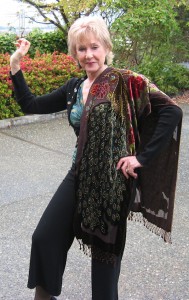 As for my mother, I have many photographs but only one that comes immediately to mind when I think of a “defining” image. The picture is in a frame in a box right now, but I’ll use a similar one of my mother, Ramona Anderson West Boylan Fletcher, from 2006 until I can find the one I’m thinking of. The picture features her dressed up in a bright red pants suit made of nylon or some high-tech fabric, her blonde hair all punked up, a lightning strike painted on her cheek, safety pins in her ears, all dressed up for a fun day in downtown Seattle at the Bumbershoot Festival. We decided we’d dress up like punkers for the event just for fun. She’s swinging off a stop sign, laughing and full of life.
As for my mother, I have many photographs but only one that comes immediately to mind when I think of a “defining” image. The picture is in a frame in a box right now, but I’ll use a similar one of my mother, Ramona Anderson West Boylan Fletcher, from 2006 until I can find the one I’m thinking of. The picture features her dressed up in a bright red pants suit made of nylon or some high-tech fabric, her blonde hair all punked up, a lightning strike painted on her cheek, safety pins in her ears, all dressed up for a fun day in downtown Seattle at the Bumbershoot Festival. We decided we’d dress up like punkers for the event just for fun. She’s swinging off a stop sign, laughing and full of life.
That’s my mother. To the world she is vivacious, energetic, and the first to jump off the bridge, out of an airplane, off a cliff in a hang glider, or tell someone exactly what she thinks of them so they actually thank her afterwards. She’s quick witted, terrible with a joke but great with a pun, and ready for anything. She’s led an incredibly full life and while she tells me she’s too tired to come for a visit or too old to travel, she’s off on another airplane to Cancun, Bahamas, Hawaii, New York, or wherever, sailing her boat, skiing down a mountain, hiking the foothills, dancing the night away.
These are pictures that don’t visually represent a life. They represent the story of the life lived not the life itself. Finding an image to contribute to The New York Times is harder than you think.
If your family member invented something or spent their life’s work on a specific project, then that would be an ideal image to contribute. For the rest of us, this is an excellent exercise in how we define the life of our family members.
Most Recent Articles by Lorelle VanFossen
- The Myths and Mysteries and Hunt for Nicholas Knapp
- The Perpetual Calendar
- GenSmarts: Reminder to Not Assume
- Gensmarts Saves Your Family History Research Life
- Digging Through Historical Newspapers Online

